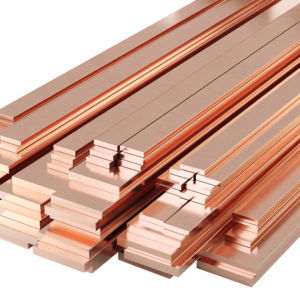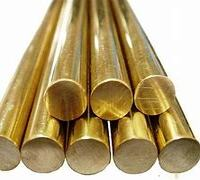1. Introduction
Copper rod is one of the most versatile materials in electrical, plumbing, and industrial applications. From grounding your home’s electrical system with a copper earth rod to joining pipes with a copper welding rod—or even recycling scrap by stripping copper wire—the uses are endless. But with so many types (like copper bonded steel, copper clad ground rod, or round bar copper) and techniques, it’s easy to feel overwhelmed. This practical guide breaks down five common tasks involving copper rod, giving you clear, step-by-step instructions to get the job done right.

2. Installing a Copper Earth Rod for Safe Grounding
A properly installed earthing rod copper system protects your property from electrical surges and lightning strikes. Here’s how to do it:
- Choose the right type: A copper bonded earthing rod or copper clad steel earth rod offers durability and conductivity at a lower cost than solid copper. Check local codes—many require at least 8 feet in length.
- Drive the rod vertically into moist soil using a sledgehammer or hydraulic driver. Avoid rocky areas; if needed, use multiple shorter rods spaced at least 6 feet apart.
- Connect a bare #6 copper wire (or copper strip for earthing) from your main electrical panel to the rod using an approved clamp.
- Test resistance with a ground resistance tester—ideally under 25 ohms. If too high, add more rods or improve soil conductivity with bentonite clay.
Pro tip: Compare earthing rod price options—solid copper rods cost more but last longer in corrosive soils, while copper bonded ground rods offer great value for most residential uses.

3. Welding or Brazing Copper Rods Together
Need to join copper components? Whether you’re using a copper brazing rod or a copper to copper welding rod, follow these steps:
- Clean both surfaces thoroughly with a wire brush or sandpaper to remove oxidation.
- For brazing (most common): Use copper to copper brazing rods with a propane or oxy-acetylene torch. Heat evenly until the base metal glows dull red, then apply the rod—it should flow smoothly into the joint via capillary action.
- For welding: Use a copper welding rod designed for your specific alloy (e.g., beryllium copper strip requires special filler). Shielding gas like argon is often needed.
- Let cool slowly to avoid cracking. Never quench hot copper joints in water.

Note: Copper rod for welding must match the base metal’s composition. Using the wrong welding rod copper type can lead to weak, brittle joints.
4. Stripping Copper Wire Efficiently for Scrap or Reuse
Stripping copper wire is a common task for recyclers and electricians. Here’s the best way to strip copper wire without damaging the metal:
- For small jobs: Use a manual wire stripper. Adjust the gauge setting to match your wire size (e.g., 12 AWG, 10 AWG).
- For long runs or thick cables: Use a cordless automatic wire stripper or a bench-mounted machine. These handle insulation cleanly and quickly.
- Avoid burning copper wire for scrap—it releases toxic fumes and reduces resale value. Most scrap yards pay more for clean, bare copper.
- When stripping wire for recycling, sort by grade: bare bright copper fetches the highest copper strip price.
Fast tip: The best way to strip copper cable is to cut it into manageable lengths first. Then feed it through your stripper slowly—rushing causes nicks that lower scrap value.
5. Choosing the Right Copper Rod Type & Understanding Pricing
Not all copper rods are the same. Your project dictates the best choice:
- Solid copper round bar: Ideal for bus bars, machining, or high-conductivity needs. Look for ‘copper bar top’ or ‘flexible copper bus bar’ for electrical panels.
- Copper bonded or copper clad steel: Used for ground rods where strength matters (e.g., copper clad steel ground rod). Cheaper than solid copper but still effective.
- Copper strip vs. rod: Need flat conductors? Thin copper strips (like 1mm copper strip or 25x3mm earth strip) work better for grounding grids or electronics. Search ‘copper strip near me’ or ‘roll of copper strip’ for suppliers.
- Price factors: Copper rod price fluctuates with market rates (check 1oz copper price trends). Copper ingot price also affects fabricated products. For bulk projects, compare copper bars for sale from multiple vendors.
Remember: Copper tubing (like 15mm copper pipe or 22mm copper tube) is different from rod—it’s hollow and used in HVAC or plumbing. Don’t confuse aircon copper pipe with solid rod!
6. Conclusion
Whether you’re installing a copper earth rod, welding copper components, or stripping wire for scrap, knowing the right techniques and materials makes all the difference. Always match your copper rod type—be it copper bonded, solid round bar copper, or flat copper strip—to the job’s demands. And never skip safety: wear gloves, eye protection, and work in well-ventilated areas. With this guide, you’re ready to tackle any copper rod project confidently and efficiently.
Our Website founded on October 17, 2012, is a high-tech enterprise committed to the research and development, production, processing, sales and technical services of ceramic relative materials such as 5. Our products includes but not limited to Boron Carbide Ceramic Products, Boron Nitride Ceramic Products, Silicon Carbide Ceramic Products, Silicon Nitride Ceramic Products, Zirconium Dioxide Ceramic Products, etc. If you are interested, please feel free to contact us.

